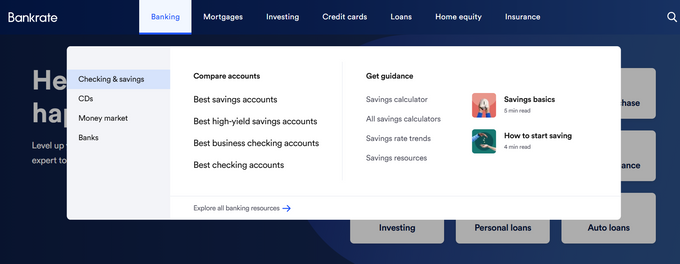How to build a content marketing strategy in 5 actionable steps
Plan, execute, and optimize your content marketing strategy with actionable tips designed to maximize conversions and ROI.
Updated March 5, 2025

A solid strategy is the foundation of any successful content marketing effort. It ensures your content delivers the right message to the right audience at the right time while boosting traffic and conversions. Without a content marketing strategy, even the best content risks falling flat and wasting resources. In this article, we'll break down what a content marketing strategy is, why it's essential, and how to build one that moves the needle for your business.
Key takeaways
- Before developing your content marketing strategy, find out which channels are best for your business.
- Focus on bottom-of-the-funnel keywords first, regardless of how competitive they are.
- Your content marketing strategy should help you build topical authority.
What is a content marketing strategy?
A content marketing strategy is a structured plan for creating, publishing, and distributing valuable content that resonates with your target audience while driving your business goals—whether that's building brand awareness, generating leads, or boosting conversions.
The building blocks of a successful content marketing strategy include:
- Clearly defining what you want your content to achieve
- Identifying and understanding your target audience
- Planning how and where you'll distribute your content
- Deciding which types of content marketing you'll use (e.g., blog posts, newsletters, videos, social media posts, etc.)
- Tracking performance with relevant content marketing KPIs
» Learn how to measure content marketing ROI.
Why you need a content marketing strategy
A content marketing strategy acts as your roadmap. Without it, your content initiatives can feel scattered, and it becomes harder to determine if your efforts are actually delivering results.
A solid content marketing strategy can help you:
- Align your team around shared goals and priorities
- Streamline the content creation and distribution process
- Allocate resources where they'll have the most impact
- Drive traffic and attract qualified leads to your brand
- Analyze your content marketing efforts and optimize them for better results
- Build authority and trust
» Discover proven techniques to improve content marketing ROI.
5 steps to create a content marketing strategy
You can use the following steps to develop a successful content marketing strategy for your business.
1. Decide which channels to focus on
The first step is to decide which channels to focus on. It doesn't have to be SEO—it could be other channels like social media or paid ads. This decision depends on your business type and where your target audience is most active.
If you want to do SEO, two conditions need to be met:
- There's search volume for what you're selling.
- There's informational search intent in your industry.
For instance, people searching for earphones often look for information like "best earphones for running," "Bluetooth earbuds vs. wired," or "Apple AirPods 4 review." In contrast, searches for products like chocolate tend to be branded (e.g., "Lindt chocolate") rather than informational.
If there's little to no informational search volume in your industry, you can create a story for your brand. For example, Kaicao created a brand story to stand out. They sell vegan, sugar-free chocolate and highlight their bean-to-bar production process, focusing on the craftsmanship behind their product.
» Conduct a content audit to see the impact of your efforts.
Another example is Tentree, a fashion company that plants ten trees for every item they sell. They position themselves as an environmentally conscious brand and advocate for sustainability in the fashion industry.
Both brands use their stories to engage audiences. Without a story or enough informational search intent in your industry, SEO is possible, but your content options will be limited. So, it may be better to focus on an alternative channel.
2. Define your bottom-of-the-funnel searches
Once you've decided which channels and types of content marketing to focus on, it's time to build your content marketing strategy. Start by focusing on the bottom of the funnel. This is the foundation of your content marketing strategy. Identify the bottom-of-the-funnel searches that are most relevant to your business and have high conversion potential, even if they're competitive.
While many businesses prioritize low-competition, high-volume topics, that's not what's most important. You need to target topics directly aligned with what you're selling, even if it means competing with larger websites. Ranking for these topics helps both users and Google understand what your website does. Additionally, visitors arriving at these pages from other channels will naturally progress through your conversion funnel because these pages reflect your core offering.
» Discover how to create content that converts.
3. Target upper-funnel topics
From there, move up the funnel and identify additional middle-of-the-funnel and top-of-the-funnel topics related to your core offering. To take a more scientific approach, evaluate each topic using two key parameters:
- Relevance to the bottom of the funnel: Determine how closely the topic aligns with what you're selling. For example, if you're selling earphones, topics related to battery life and audio quality may be relevant.
- Search volume: The higher the relevance and search volume, the greater the conversion potential.
» Leverage the best tool for building SEO funnels that convert.
4. Structure your content correctly
Next, focus on structuring your content effectively. Many websites still rely on a single blog section for all their content, but this is an outdated approach. Instead, you can learn from publishers like Bankrate, who often set the standard for content creation and conversion rate optimization best practices. They organize their content into verticals (banking, mortgages, investing, credit cards, etc.) rather than lumping everything into one blog.
For example, if you're covering online therapy, create verticals for the main overarching topics, such as anxiety, depression, OCD, and so on. This structure makes it easier to develop and maintain content over time.
» Learn how to optimize your site for conversion.
5. Build topical authority
When developing a content marketing strategy, it's crucial to prioritize topical authority. This doesn't mean just creating a lot of content but ensuring it's well-structured and interconnected.
Your site's URL and internal linking structure should support content clusters. Build around a pillar page that serves as the main hub for a topic, with related pages linking to it—and vice versa. This structure helps you build topical authority, which is becoming more important in today's competitive landscape.
Create a strategy that delivers
Building a successful content marketing strategy requires a deep understanding of your audience. By starting with high-conversion, bottom-of-the-funnel topics and expanding strategically to cover upper-funnel content, you create a foundation that drives results. Pair this with a solid content editing process, effective internal linking, and a focus on topical authority, and you'll set your strategy apart in today's competitive landscape. Remember, a well-thought-out plan isn't just about creating content—it's about delivering value to the right audience at every stage of the user journey.
» Book a consultation for expert advice on your content marketing strategy.








